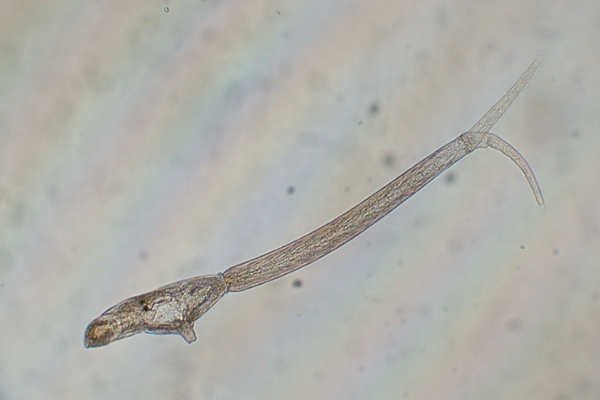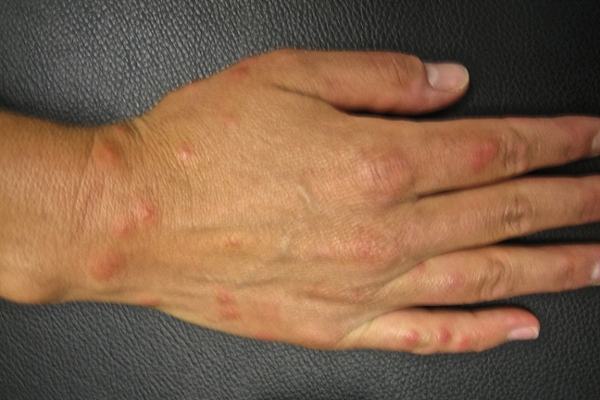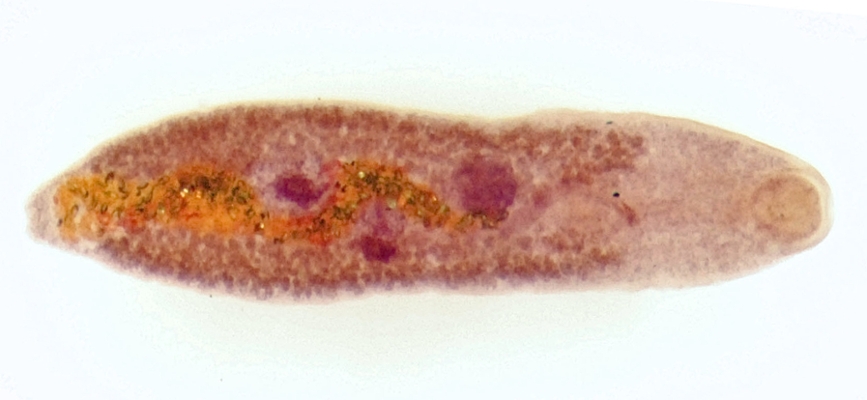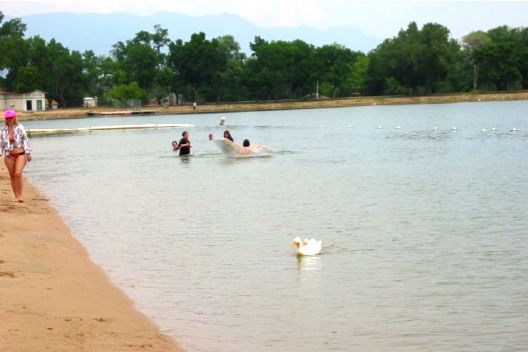New Methods for the Detection and Diagnosis of Swimmers' Itch

Swimmers' itch, also known as cercarial dermatitis, is a summer affliction that many of us have suffered following a swim in a freshwater pond or lake, or even occasionally after a dip at the seashore. Swimmers’ itch is especially prevalent in the upper Midwestern states of the U.S. and is also reported widely throughout Europe. Swimmers’ itch occurs when the cercariae of schistosomes that normally develop in aquatic birds penetrate the skin of a human swimmer instead. Because humans are an inappropriate host, the cercariae die in the skin, inciting formation of an itchy, weeping red welt at the site of penetration. Some unlucky swimmers may end up with hundreds of these welts after a single swim. Repeated exposures to avian schistosome cercariae result in even more intense and itchy responses. Over the past decade, Division of Parasitology Collections Manager Sara Brant has been working with Curator Sam Loker to develop an extensive collection of avian schistosomes from all over the world. By application of the techniques of molecular systematics to these specimens, it has been possible for the first time to develop a more coherent overview of the number of species potentially responsible for causing swimmers’ itch and to provide a growing database for where these species occur and what their normal snail and avian hosts are. The distinctive molecular signatures provided for each species can be used to devise new tests by which DNA from cercariae obtained from water samples from ponds or lakes suspected of having dermatitis outbreaks can be amplified and detected. Using sequence information for avian schistosomes provided by the Division of Parasitology, these tests have been devised by Dr. Jothikumar Narayanan and colleagues at the Centers for Disease Control and Prevention in Atlanta, and have already been used to help pinpoint the species involved in outbreaks in lakes in the Midwest. The sensitivity and specificity of the assays can help determine what avian species are propagating infections in local snail populations in which the cercariae are then produced which are released into the water to cause itch. It can, for instance, help determine if outbreaks are due to contamination of habitats by migrating waterfowl, or by other species such as blackbirds that nest along the banks of the affected water bodies. Such tests can eventually be used to help predict outbreaks, to identify the species of schistosomes, birds and snails most likely involved in participating in the outbreak, and in suggesting ecologically sound ways to alleviate the impacts of dermatitis without affecting wild populations of birds or snails.
for more information...






